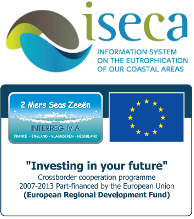During the last two decades several integrated tools have been developed to make the existing scientific knowledge available to river managers and assist them with the formulation and evaluation of alternative combinations of measures. Yet, few practical examples of embedding of these instruments in river management organizations can be observed so far. This paper identifies the possible organizational, technical, and scientific factors that may form an obstacle for the design and application of a Decision-Support System (DSS) for river-basin management by analyzing the interaction between the different participants in the Elbe DSS project. In particular attention is paid to the software engineering aspects of the design process. In order to start an integrated approach to deal with conflicting river strategies a project to develop a prototype tool for integrated management of the Elbe catchment was initiated, which includes functionalities related to inland navigation, water quality, flood safety, and vegetation ecology. The problems faced in the German part of the Elbe catchment range from poor navigation conditions and flooding vulnerability to a need to restore and maintain the natural state of the floodplains. Several river engineering works such as large-scale dike shifting, channel dredging, and large-scale retention are in a planning or implementation stage. From the beginning of the project onwards attention was paid to the involvement of potential end-users and key stakeholders in the design process. The experience of the project is that internal consistency of models and data, effective communication, and functional flexibility are essential to warrant a proper balance between scientific standards, the availability of models, and the requirements of users. This facilitates the design process and improves the chance of successful implementation. |














